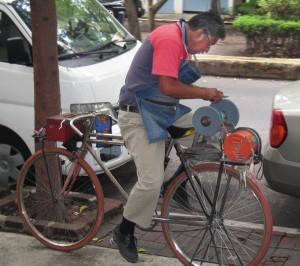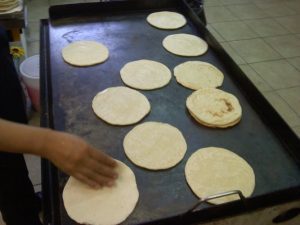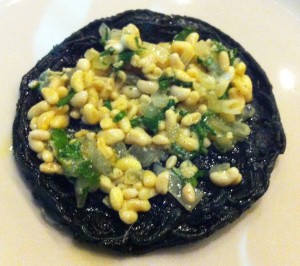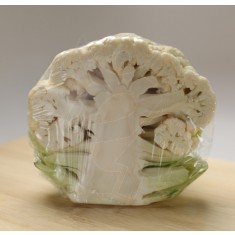Nicholas Gilman from Zester Daily shares with us the 7 1/2 reasons why he loves living in Mexico
1. Knife sharpeners come to my door. Things are never dull around my kitchen as afiladores (as knife sharpeners are called in Spanish) circulate on bicycles, their distinctive whistle, an import from Spain, resounding through the neighborhood to alert the cutting impaired. Homemakers, chefs and other dull-bladed souls emerge from their kitchens to have knives, scissors, garden shears and the like expertly ground on a round stone that is turned by wheels of the very same bike, right there on the sidewalk.
2. My butcher will bone a chicken (or do anything else I want). Like most hopeful amateurs and semiprofessionals, I have watched Julia Child bone a whole chicken with little effort, promising that it’s not as hard as it seems. I wouldn’t know, as I’ve never had to do it. Here, we buy our birds at the old-fashioned market where butchers will gladly prepare according to customer needs. Breasts are boned and pounded, thighs cubed for brochettes. Beef or pork (or a mixture of both as you wish) is ground once or twice. Pork loins are flayed. My butcher Meche may think it a bit odd, but is happy to cut a boned chicken breast into long, thin slices, as my Chinese recipe requires. This would be an impossible dream for a knife-technique-impaired chef like me. Oh, and by the way, there’s no extra charge for this service.
3. I can eat a bowl of chicken soup on the street. Mexico City is host to an abundance of street stalls offering caldo de gallina: chicken soup. Huge pots of carcass-filled broth bubble away, proving that you don’t need a home to produce a homemade product. The soup, which can be ordered with breast, thigh, leg or nothing at all, is made rich by the addition of a spoonful of rice and garbanzos, a bit of raw onion and cilantro, a squeeze of lemon and some chile flakes to taste. Served with fresh warm corn tortillas, this heart warmer could even top that of the best Jewish grandmother.
4. Fresh squeezed orange juice is available year round. One of myriad fruit and juice stands is located right at my corner, offering round the clock fresh squeezed juices as well as cut up fruits for less than it costs to do it yourself. Fruit, while seasonal, is brought to the capital all year from the four corners of the republic. Mexico is home to jungles and mountains alike. Mangoes, best in the summer, are always available, as are succulent papayas, at least five varieties of bananas, berries and the more exotic mameys and zapotes. A full liter of orange or tangerine juice costs less than $2.
5. Handmade corn tortillas are easy to find. All neighborhoods in the city as well as provincial towns are host to a weekly tianguis (market). Vendors offer the freshest produce, meats and sundries. In the upscale and fashionable areas of the capital these street markets, in keeping with the needs of their sophisticated clients, stock items not typically used in a Mexican kitchen, such as arugula, kale, ginger, leeks and porcinis. As well, braid-sporting women from the country journey into this megalopolis, sacks on their weathered backs, to sell country bounty: wild greens known as quelites, freshly harvested and dried beans and, best of all, hand ground and fashioned corn tortillas. Aficionados know that these beat the tortilleria-bought kind by a landslide: The texture and rustic corn flavor is what it’s all about.
6. I can buy a great baguette around the corner. Some areas of the city have become the visible scene of a new immigration. Young Euro foodsters, coming from such places as the City of Light, where opening a business of any kind is cost prohibitive, or Spain where the economy is in the doldrums, are seeing opportunity knocking in the previously good-bread-starved New World. In middle-class to upscale neighborhoods, patisseries and French boulangeries are opening at, what to anyone trying to watch their weight, is an alarming rate. Beautiful artisanal bread is within arm’s reach. At the same time, friendly traditional panaderías continue to thrive — customers load aluminum trays with pan dulces for breakfast or supper and crunchy bolillos for lunch. Tradition lives side by side with the nouvelle vogue.
7. We eat bugs. OK, so this is a mixed blessing. The truth is that I hate bugs, looking at them, eating them. I know they’re good for me, that they are a great source of protein and that consuming them has a long tradition in Mexican culinary history. Top chefs at about every highfalutin restaurant in town have been including creepy crawlies in their menus. Elena Reygadas (of Rosetta) creates artistic Italianate hors d’oeuvres using pretty little beetles. Alejandro Ruiz at his Guzina Oaxaca does a traditional salsa of chicatanas (flying ants to you and me). Meanwhile, ordinary folk delight in munching fried grasshoppers with their beer or a taco of gusanos de maguey (grubs), when the season hits. I’ll try them all and support the movement wholeheartedly and maybe someday I’ll even grow to be a bug lover. Whether I eat them or not, I love the fact that it’s part of the medley of Mexican cuisine.
7½. I can buy half a cauliflower in the market. In Mexico, miniscule amounts of almost everything are routinely sold. Aside from cauliflower, you can get a quarter of a cabbage, a pair of chicken feet, a single stalk of celery, or dos pesos of parsley — you can even buy a single cigarette. In a poor country, this makes great economic sense. My own reasoning is not so much economic as prudent — I have far fewer rotting vegetables in my fridge these days.
By Nicholas Gilman
Source: http://zesterdaily.com/









No comments:
Post a Comment